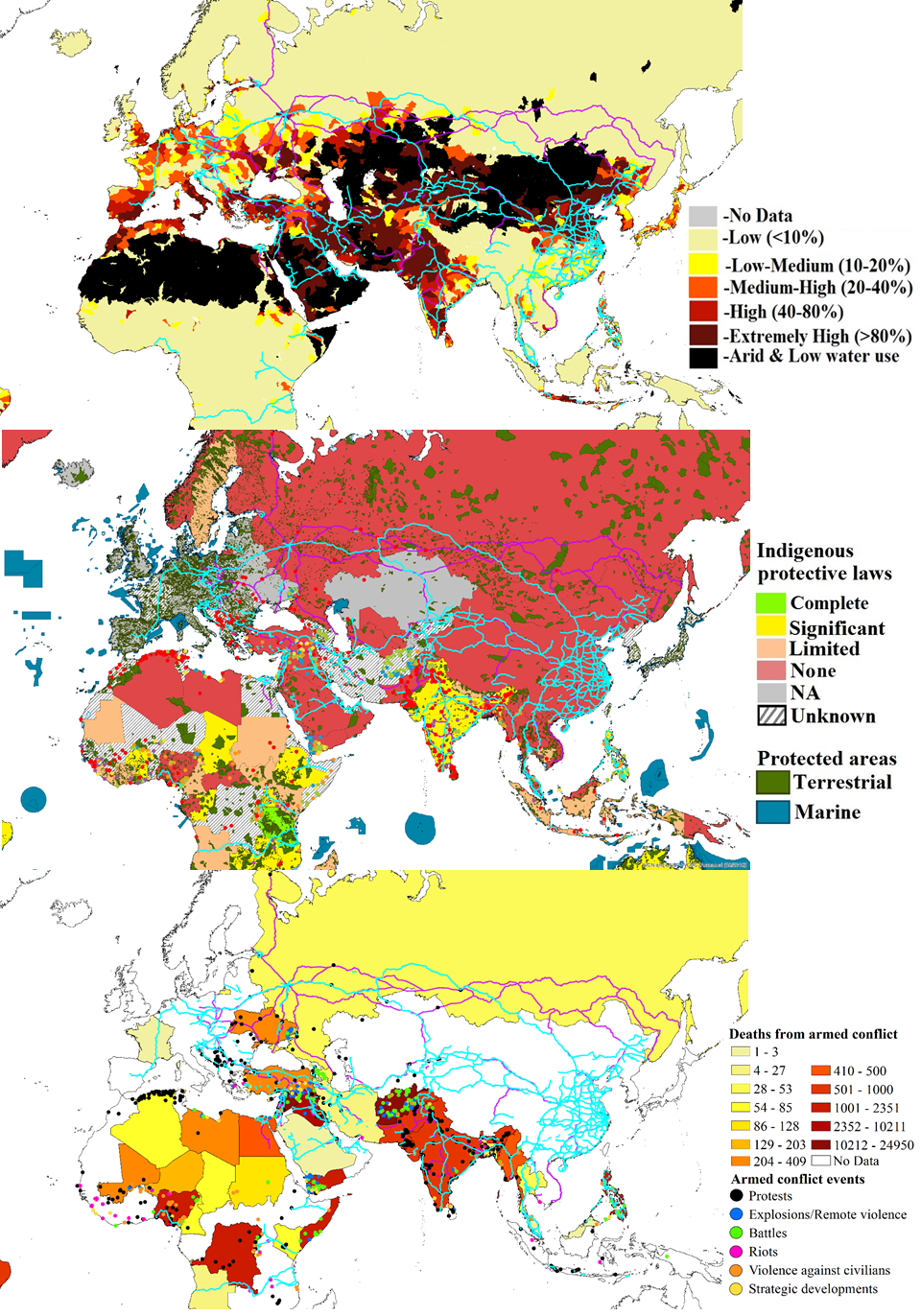Trends in Ecology & Evolution:A Review of Horizon Scan of the Belt and Road Initiative
Author :wangwc
2020-04-14 13:41
The Belt and Road Initiative (BRI) represents the largest infrastructure and development project in human history, and presents risks and opportunities for ecosystems, economies, and communities. Some risks (habitat fragmentation, roadkill) are obvious, however, many of the BRI’s largest challenges for development and conservation are not obvious and require extensive consideration to identify. In this first BRI Horizon Scan, we identify 11 frontier issues that may have large environmental and social impacts but are not yet recognised. More generally, the BRI will increase China’s participation in international environmental governance. Thus, new cooperative modes of governance are needed to balance geopolitical, societal, and environmental interests. Upgrading and standardising global environmental standards is essential to safeguard ecological systems and human societies.
The 11 frontier issues are:
1. Groundwater Pumping Threatening the Viability of Freshwater Ecosystems
2. Invisible Invasives: Incidental Spread of Fungi, Bacteria, and Viruses
3. Cementing Extinction
4. Polar/Arctic Silk Road
5. Coastal Ecosystems under Threat
6. BRI and Traditional Chinese Medicine (TCM) Supporting and Stimulating a Market in Wildlife Trade
7. Harmonizing International and National Environmental Standards in BRI Foreign Investment Projects
8. Securing the Inclusive Governance and Management of ‘Territories of Life’ and Recognising the Role of ‘Culture’ in Conservation of Biodiversity by Indigenous and Local Communities
9. The Environmental Consequences of Geopolitical Rivalry over Infrastructure Financing
10. Regreening the Never Green: ‘Anti-desertification’ and ‘Restoration’ in Natural Ecosystems
11. Willingness to Build Infrastructure in Existing Conflict Zones
Many of the 100 issues in our initial list were considered high impact but not novel and thus were not included in the final list of 11 frontier issues. However, to our knowledge, no holistic interdisciplinary evaluation of even the non-novel impacts exists for any given geographic region. Although ecological analyses have been conducted, analysing environmental impacts is challenging due to the lack of biodiversity data for many BRI regions, and have largely ignored more complex topics or the interactions between environmental and social issues.
Many of the issues that we identified in our Horizon Scan, particularly: TCM supply chain tracking, harmonisation of environmental standards, geopolitical rivalry, and building in conflict zones, suggest that China will need to increase its participation in the structures of global environmental governance. Domestically, China has recently instituted a high-level policy of achieving an ‘ecological civilization’, which includes, as one of its measures, the definition and protection of ‘ecological redlines’, which are the minimal areas needed to guarantee ecological functioning and biological diversity. This is arguably the largest ecosystem-service-protection policy in the world, and its implementation, assessment, and enforcement pose a challenge for China’s scientists and policymakers, addressed in part through the science plan. Important questions to ask are whether China will apply the ecological redline concept to the BRI, and if so, how the governance of such an approach can be instituted in a more complex international environment .
Alternatively, the build-up of economic competition within the international system may fuel a race to the bottom. Thus, new cooperative modes of governance are needed to balance a wide range of geopolitical, societal, and environmental interests. Upgrading global environmental standards is a prerequisite for ensuring a more sustainable and equitable BRI that can play a role in safeguarding the future of ecological systems and human societies.

Figure 1. Spatial Overlaps between Belt and Road Initiative (BRI)-Associated Roads (Light Purple) and Railways (Light Blue) in Eurasia and Africa.
(A) Groundwater supply projection for 2020 based on the Representative Concentration Pathways (RCP) of 2.5, Shared Socioeconomic Pathway (SSP)2 at the Coupled Model Intercomparison Project (CMIP)5 phase (as projections were almost complete for 2020). (B) Indigenous territories (scale is progress towards providing legal security for indigenous groups) and state-protected areas. (C) Conflict areas and level of conflict. Some of these routes already exist but may be rebuilt, upgraded, resurfaced, enlarged, or have new routes built to replace them. Routes continuous to those built as part of the BRI are expected to receive additional traffic from BRI-facilitated trade (e.g., some of those in China, India, and the EU). Sources of data and figure construction are detailed in the supplemental information online.
